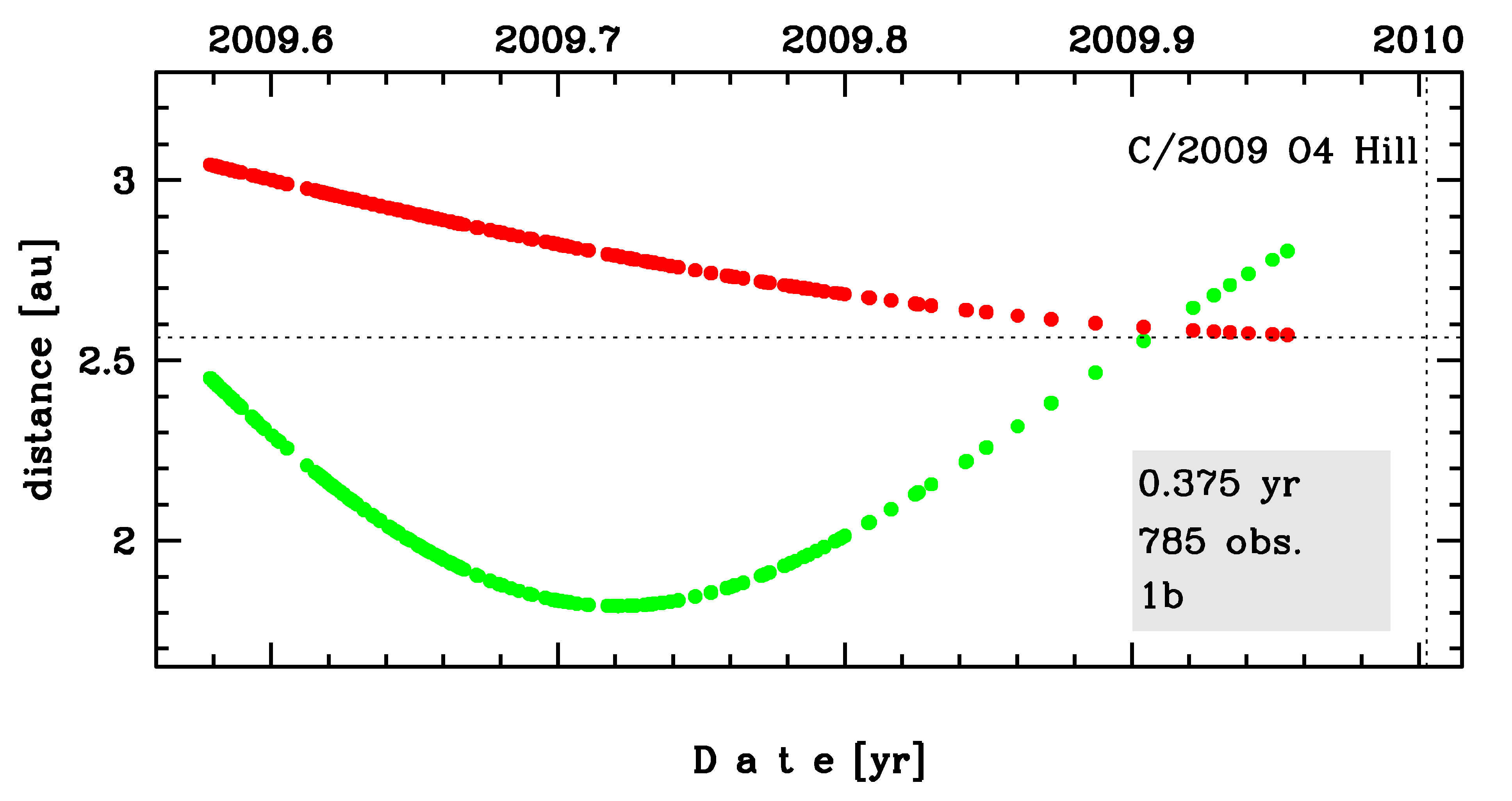C/2009 O4 Hill
more info
Comet C/2009 O4 was discovered on 30 July 2009 by R. E. Hill (Catalina Sky Survey); that is about 5 months before its perihelion passage. The comet was observed only before perihelion until 14 December 2009.
Comet had its closest approach to the Earth on 19 September 2009 (1.819 au), about 1.5 month after its discovery.
Solution given here is based on data spanning over 0.375 yr in a narrow range of heliocentric distances from 3.04 au to 2.57 au.
This Oort spike comet suffers small planetary perturbations during its passage through the planetary system; however, these perturbations lead to escape the comet from the solar system on hyperbolic orbit (see future barycentric orbits).
See also Królikowska and Dybczyński 2013 and Królikowska 2020.
Comet had its closest approach to the Earth on 19 September 2009 (1.819 au), about 1.5 month after its discovery.
Solution given here is based on data spanning over 0.375 yr in a narrow range of heliocentric distances from 3.04 au to 2.57 au.
This Oort spike comet suffers small planetary perturbations during its passage through the planetary system; however, these perturbations lead to escape the comet from the solar system on hyperbolic orbit (see future barycentric orbits).
See also Królikowska and Dybczyński 2013 and Królikowska 2020.
| solution description | ||
|---|---|---|
| number of observations | 785 | |
| data interval | 2009 07 30 – 2009 12 14 | |
| data type | observed only before perihelion (PRE) | |
| data arc selection | entire data set (STD) | |
| range of heliocentric distances | 3.04 au – 2.57au | |
| detectability of NG effects in the comet's motion | NG effects not determinable | |
| type of model of motion | GR - gravitational orbit | |
| data weighting | YES | |
| number of residuals | 1522 | |
| RMS [arcseconds] | 0.39 | |
| orbit quality class | 1b | |
| orbital elements (heliocentric ecliptic J2000) | ||
|---|---|---|
| Epoch | 2009 08 31 | |
| perihelion date | 2010 01 01.27745440 | ± 0.00105502 |
| perihelion distance [au] | 2.56378202 | ± 0.00000799 |
| eccentricity | 1.00132660 | ± 0.00001263 |
| argument of perihelion [°] | 223.732319 | ± 0.000350 |
| ascending node [°] | 172.936520 | ± 0.000026 |
| inclination [°] | 95.822999 | ± 0.000156 |
| reciprocal semi-major axis [10-6 au-1] | -517.44 | ± 4.92 |
